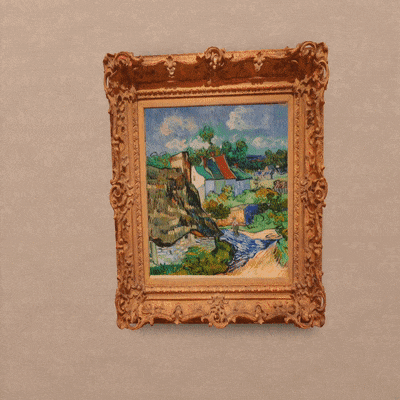Cuseum Launches “Museum From Home”
- Cecilia Kramar
- May 13, 2020
- 4 min read
Breakthrough neurological study suggests that the human brain doesn’t differentiate between digitally reproduced artworks and their originals.nd their originals.
by Cuseum
In 1935, Walter Benjamin published his groundbreaking essay, “The Work of Art in the Age of Mechanical Reproduction,” in which he claims that the aura of a work of art is denigrated through its reproduction. “Even the most perfect reproduction of a work of art is lacking in one element,” he writes, “its presence in time and space, its unique existence at the place where it happens to be”.

And just like this, challenging old beliefs and making use of new technologies, Cuseum announced a few days ago the release of a new Augmented Reality (AR) experience that virtually transports famous artworks from museums into people’s homes. Through the power of Augmented Reality, the new “Museum From Home” feature will allow users of Cuseum-powered apps to experience the artworks from the comfort of their homes.
Have you ever wanted a Caravaggio in your living room? A Botticelli in your bathroom? Maybe a Bernini in your kitchen island? We will now be able to virtually place paintings and other objects onto our walls and revel in artworks that are typically only available to view inside a museum setting.

“In light of the COVID-19 pandemic and the widespread closures of museums across the world, the necessity of creating an alternative, a remote way to experience art and culture has never been greater,” said Brendan Ciecko, CEO & Founder of Cuseum. “In these unprecedented times, we’re helping people across the globe feel connected with works that bring them joy and inspiration. Just imagine experiencing your favorite artwork from the comfort of your own living room – we’re excited to make this a reality.”
Accompanying the release of this new AR offering, Cuseum has published the results of a 10-month long research study on the neurological perceptions of original artworks as compared to their Augmented Reality (AR), Virtual Reality (VR), and digital versions. This study was inspired by ongoing questions about art and aesthetics, which have been disrupted by recent developments in technology. This groundbreaking research supports the claim that AR and VR can provide an equally immersive and neurologically stimulating experience on par with that of viewing the authentic, original artwork in-person at a museum or gallery.
This study was conducted by a team of neuroscientists and advised by Dr. Pawan Sinha, a world-renowned neuroscientist at the Massachusetts Institute of Technology (MIT). The researchers examined the emotive responses to original artworks versus their digital equivalents. According to the research team, the “current EEG findings would suggest that aesthetic experience is not denigrated by a digital interface representation and, in fact, digital reproductions in the case of augmented reality are shown to improve the magnitude of brain activity compared to the viewing of original works of art.”
KEY FINDINGS
• The EEG findings would suggest that aesthetic experience is not denigrated by a digital interface representation and, in fact, digital reproductions in the case of augmented reality are shown to improve magnitude of brain activity compared to the viewing of original works of art.
• Participants reported an equally clear short-term memory of paintings in the AR, VR, and real environments.
• Paintings in the AR environment were reported to be the most memorable in the long-term and out of all four experimental environments, including the real environment.
• AR was shown to have the highest level of information processing from our EEG analysis, which is supported by participants’ clearer long-term memory of AR compared to all other environments.
“Critics have long debated the role and impact of technology in the display, consumption, and creation of art. Until now, there has never been an empirical study that looks beyond opinion and taps into neurological activity to understand the human brain’s response to art experienced in real-life compared to virtually,” added Ciecko. “Today marks a new milestone in our understanding of how people perceive and react to art through digital channels, and offers immutable support for continuing to make art accessible in all formats. This research underscores that the ‘aura’ of art is not lost when experienced virtually.”
While the results found in this study would likely be met with outrage from Walter Benjamin in 1935, they demonstrate just how far technology has gone to improve digital experience in art and show promise that digital interfaces have the potential to amplify a museum-goer’s experience.
An overview of the study and full report is available online at Cuseum
For more information about the new Augmented Reality experience and details about how to participate, please visit Cuseum from home About Cuseum
Cuseum helps organizations drive visitor, member, and patron engagement using digital tools. Cuseum's software platform makes it easy for museums, attractions, and nonprofits to publish mobile apps, generate digital membership cards, and leverage data insights. Headquartered in Boston, the company is backed by leading investors including Techstars. For more information visit www.cuseum.com or follow Cuseum on Twitter at @cuseum.
press@cuseum.com








Comments